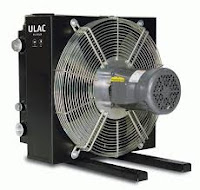Inductors are very efficient:
very little energy leaks out of the pot into the air - most of it is
transmitted into the kettle, which heats the water. In contrast, conventional
hobs just get hot: they heat the kettle, because it's nearby, but lots of energy
also escapes into the air. So, an induction cooker is very fast at heating
water, compared to Induction hardening Faridabad.
We can see that the ceramic
hot-plate isn't there to heat the kettle, because that's being performed by the
field - in fact, it's there's to insulate the fairly delicate induction
circuitry from the hot kettle. To stop it overheating, it needs to be cooled
from underneath, and so tea-versions usually have a noisy fan roaring away. I
don't like this about induction cookers. It really ruins the tea atmosphere.
Induction also has lots of other
fun applications: as the water heats, the characteristics of the field change,
which can be sensed by the induction unit, and so the field can be changed to
compensate. This allegedly leads to induction kettles with temperature control
- but they're usually fairly horrible. I've not seen one that I could trust so
far, and it's infinitely easier (and more reliable) just to learn it yourself -
and more satisfying in oil
coolers in Faridabad.
Induction also requires some
resilient materials. The magnetic field is always set up in the same way, and
the location of the most heated areas is concentrated spatially - it's not an
"all over" heat, like a conventional hot-plate would provide, but
appears in regular "hot spots". You're heating the base of your
vessel in a fixed pattern, repeatedly, and the (really rather significant)
temperature differential across the metallic lattice can lead to stress
fractures. Don't put your expensive Japanese kettle on an induction hob Induction hardening Faridabad!


No comments:
Post a Comment